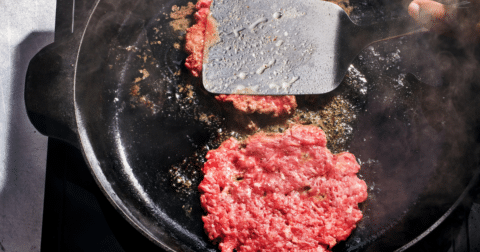News
RFK’s New Dietary Guidelines Delayed Again, Amid Concerns
Diet•6 min read
Explainer
Why hyperfocusing on ultra-processed food omits the full picture.


Words by Seth Millstein
The Trump administration has it out for ultra-processed foods. Despite the president’s personal affinity for McDonald’s, Health and Human Services Secretary Robert F. Kennedy Jr. has long been opposed to ultra-processed foods, and his Make America Healthy Again (MAHA) commission recently linked ultra-processed foods to chronic illnesses in children.
The accuracy of Kennedy’s MAHA report was thrown into question days after its May 22 release, however, when reporters discovered that it cited multiple studies that don’t exist and altered the numbers of real studies in order to more strongly support its conclusions. Still, the question is worth asking: Are ultra-processed foods really as unhealthy as Kennedy says?
Not quite. The devil is in the details, and when it comes to the health impacts of ultra-processed foods, it really depends on the food, as well as the healthfulness of your overall diet.
There are many, many different types of foods that count as “ultra-processed,” and this makes it impossible to make any kind of generalized statement about whether or not they’re always healthy or unhealthy.
“I’m always really hesitant to put foods in ‘good’ and ‘bad’ categories, ultra-processed or not,” dietitian Stephanie Hodges tells Sentient. “It’s not telling the whole story of whether or not a food is of high nutritional value or low nutritional value.”
To be sure, some ultra-processed foods are clearly unhealthy, including ultra-processed meats and sweetened sodas. But ultra-processed foods is a nuanced topic — and we first need to define what exactly we mean by “ultra-processed.”
“Processed food” has a simple yet broad definition: If an agricultural product has been changed in any way from its original form, it’s been processed. This encompasses an enormous variety of preparations: Cutting an apple in half, washing a piece of lettuce, baking a cake, making a pasta sauce and growing meat from cultured cells are all different forms of food processing.
The category of ultra-processed was supposed to narrow the field, but it turns out that defining “ultra-processed food” isn’t so easy either. After all, “ultra” really just means “very” or “highly,” and because there are so many different ways and extents to which food can be processed, there’s no obvious or definitive place to draw the line between processed food and ultra-processed food.
That said, there have been some attempts at standardizing the definition. One of the most widely used is what’s called the NOVA classification, which was designed by the Center for Epidemiological Studies in Health and Nutrition, School of Public Health at the University of Sao Paulo, Brazil and has since been used by the United Nations, the U.S. government and others.
The NOVA definition of ultra-processed foods is quite detailed, but highlights include “industrial formulations,” “food constituents (hydrogenated fats and modified starch)” and foods “synthesized in laboratories from food substrates or other organic sources.” They often include additives, such as food coloring or flavor enhancers, and typically don’t include any whole foods as part of their formulations.
The list of foods that qualify as ultra-processed is also very long and extremely varied. Under the NOVA classification, all of the following (and many other foods) are considered ultra-processed:
But, as we’ll see, the amount of processing a food has undergone is only part of the story, and isn’t a viable litmus test for determining a food’s overall nutritional value.
To be sure, many ultra-processed foods aren’t very healthy, and some are actively unhealthy. There are a few reasons for this.
First, processing sometimes removes healthful nutrients from foods that they contain in their natural state. Fiber is a classic example of this, as both fruits and wheat lose much of their naturally occurring fiber when they’re processed in certain ways.
“If you think about turning a whole-wheat flour into a refined wheat flour, you’re going to lose about three-quarters of the fiber in that wheat flour,” Noah Praamsma, nutrition education coordinator at the Physicians Committee for Responsible Medicine, tells Sentient. “You are losing some of that fiber, along with some micronutrients that your body really, really needs, and thrives on.”
This loss of nutrients like fiber can lead to a secondary problem: overconsumption. Praamsma uses the example of certain whole-wheat breads, which are minimally processed, and white bread, which is ultra-processed. Because white bread has less fiber, it’s not as filling as whole-wheat bread, which makes it easier to eat more of it.
Of course, ultra-processed foods that are high in salt, fat or sugar (or, sometimes, all three) are designed to be highly palatable, triggering your impulse to keep eating.
Despite all of the above, it would be a mistake to conclude that all ultra-processed foods should always be avoided. Many of them aren’t bad for you, and in fact, some are healthy. It all depends on the food in question, and, again, your overall diet.
“If you just group that whole category all together, and look at it from 10,000 feet, you’re going to see negative health impacts from eating more of them,” Praamsma says. “But it’s also important to go further, and start looking at what foods are really contributing to those negative impacts.”
Some foods are flat-out dangerous unless they’re processed. Such is the case with raw milk, which Kennedy has promoted as a healthier alternative to pasteurized milk. It’s not; raw milk can contain dangerous pathogens that are removed by the pasteurization process, and according to the FDA, it’s sickened thousands of people in the U.S. since the late 1980s and led to several deaths, stillbirths and miscarriages.
One popular critique of plant-based meat substitutes is that they are ultra-processed and, therefore, unhealthy junk food. In fact, as Sentient reported earlier this year, an industry group called the Center for Consumer Freedom, now called Center for Organizational Research and Education, has even paid for a Superbowl commercial and advertising in national newspapers to promote this message.
In reality, many plant-based meats are designed to mimic the taste of conventional meat they aim to replace. With near-identical nutrition, a plant-based beef burger isn’t going to be worse for you than a beef burger, but it won’t be better either. However, last year the brand Beyond Meat began marketing burgers that are intended to be healthier, but whether that change has staying power remains to be seen.
Of course, not all plant-based substitutes are ultra-processed. Tofu, tempeh and seitan are minimally processed foods that offer plenty of nutrients with little or no added fats or salts.
It’s the switch that’s important. If you are replacing lentil stews and roasted chickpeas with ultra-processed plant-based burgers, that is a less nutritious choice. But if you are replacing meat and chicken tenders, chances are your choice is just as healthy for you, and is also better for climate emissions, animal welfare or both.
Dietitian and author Jessica Wilson says that people often refer to “ultra-processed foods” when really, they’re only talking about a small subset of ultra-processed foods that are already understood to be unhealthy, like “chips, candy, soda, cakes and pastries.”
While ultra-processing has captured our attention these days, it’s ultimately more important to think about the big picture when it comes to your dietary choices.
“The research about the health risks of ultra-processed foods is mixed,” Wilson says, while for fruits and vegetables, it’s actually pretty clear that eating more is beneficial. Instead of studying the classifications of ultra-processed foods, Wilson says “adding fruits and vegetables to the meals that we’re already eating would be a better focus.” To the extent that you can, she says, “Eat more fruits and vegetables. And drink more plain water.”